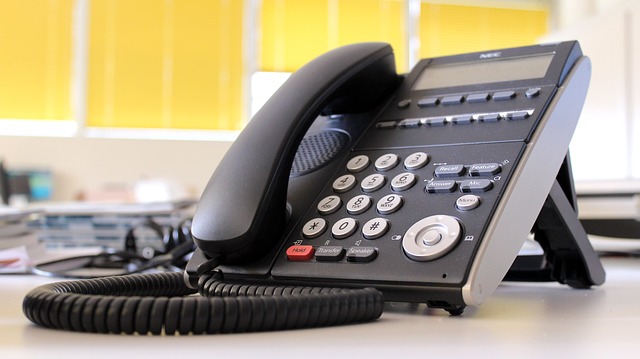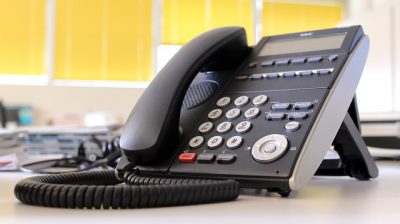- September 30, 2020
- Posted by: David Marshall
- Category: Business, Management

Companies looking to save money and trim the fat without affecting salaries can cut costs in a few key areas that can help you reduce your overall costs without hurting your bottom line or the people who work for you.
There are a few places where you can make cuts to your outside expenses without losing performance and can still save a lot of money. A recent article in Industry Week discussed the cost-savings measure, and I had an idea or two of my own.
According to Industry Week, your costs in telecommunications and networking, payment processing, and a couple of other areas could be as much as 15 – 20% of your total outside expenses.
Telecommunications and Networking
 First, look at your telecommunications and networking plans. Many companies are often paying for KSU or PBX systems they had installed ten or even 15 years ago. But the technology has changed, the prices have dropped, and you could benefit from a new cloud-based VoIP (Voice Over IP) system that basically is an Internet-based phone system.
First, look at your telecommunications and networking plans. Many companies are often paying for KSU or PBX systems they had installed ten or even 15 years ago. But the technology has changed, the prices have dropped, and you could benefit from a new cloud-based VoIP (Voice Over IP) system that basically is an Internet-based phone system.
Talk to your CTO and find out when you last upgraded your phone system. It could be that you’re still using an older legacy phone system that hasn’t been updated since Alexander Graham Bell bellowed for his assistant.
The benefit of a VoIP system is that all calls are made over the pre-existing Internet system, so you’re not paying for new wiring and installations. It scales quickly and easily, and it’s significantly more efficient than the existing systems many plants still have.
If you need broadband Internet, especially in your plants, conduct an audit on your current setup and see if you can either reduce your price, increase your speed, or both. As Industry Week said, “There are multiple and sometimes lesser-known providers who specialize in meeting manufacturers’ stringent demands, and their pricing is highly competitive.”
Be sure to check your mobile plans as well, especially if you’ve got many people working from home. If you’re paying for a lot of individual plans, you might be able to find some savings by combining several of your employees on a single plan.
Go over all your phone bills with a fine-tooth comb. Compare the plans each of your plants is on, as well as any mobile plans your salespeople and administrators have. There could be some discrepancies in pricing or features that you’ve missed, either that you’ve canceled but are paying for or are paying for and aren’t receiving.
Finally, if you have in-house servers to host your business services and data, check out my recent post on cybersecurity by upgrading your servers to a cloud-based server setup. There are several ways of moving to a cloud-based server system can save you money.
- It reduces your energy costs. A server room uses a lot of power to operate the servers and the air conditioning. (Servers generate a lot of heat, and you have to cool off the server room no matter what time of year it is.) You can save a lot of money on cooling and power costs just by moving your data to the cloud.
- It lets you expand without increasing your physical space. If you ever need to add more servers and you run out of space in your building, you’re ultimately limited by whether you can knock down a wall or move to a new space.
- Expanding only costs a few dollars. There may be times where you need more processing power for a few days, or you may want to add some additional storage space. You can expand in a matter of seconds for a few dollars per month.
- You don’t have to upgrade your servers. Manufacturing equipment can last for decades, but a server usually lasts no more than five years. But if you have a cloud service, the provider handles all the upgrades, not you, so there are no upgrade costs.
Cut Costs with Payment Processing
If you process credit cards and are using the equipment provided to you by your bank, you’re most likely paying too much — equipment rental, fees, and even the merchant services fees can add up to quite a bit. Also, banks are some of the least competitive when it comes to equipment rental pricing, so you may be overpaying just by renting from the same bank that provides your business services.
There are plenty of merchant service providers out there who can provide you with a competitive rate and charge less than the bank for your processing equipment. You can even get a virtual terminal where you either enter the customer information yourself, or your customers can do it on their end.
Not only does this cut costs on all that equipment, but you can ask for additional customer information with each transaction, which can help you avoid issues like chargebacks and disputed charges.
Also, warns Industry week, now is the time to review best practices for securing your company’s payment data: “IBM Security has found that the average cost of a data breach for organizations worldwide is just under four million dollars.”
That means make sure you have cybersecurity insurance as a separate business insurance policy. Not all business insurance fully covers cybersecurity issues, but cybersecurity insurance will pay for things like notifying your customers, providing credit monitoring, and so on if you ever have a data breach.
Go Paperless
The problem with using paper in an office is that you need a place to store the raw material, equipment to process it, and a place to store the finished product. It’s like a manufacturing operation, only you don’t get to ship your products. You just pay for more and more warehouse space.
But you can save a lot of money by switching to a cloud-based document management system, keeping things like policy and procedure manuals online, storing past invoices and bills of lading, and filing budgets, meeting agendas and minutes. (Does anyone really look at those five years later? Then why are you keeping them in binders?)
Think of all the shelves full of binders and filing cabinets full of documents from things that happened years ago. How much money went into just the furniture to store all of that paper? How much will you spend to store more of it in the coming years? When your office gets too full, you’ll even ship them off into a warehouse where they can be saved for many more years, “just in case.”
By switching to a document management system, you can cut costs by cutting back on all the paper you use and store, as everything is not only saved online, but it can be easily accessed by your associates, who can read the information on their laptops, tablets, and mobile phones.
I’ve been a manufacturing executive, as well as a sales and marketing professional, for a few decades. Now I help companies turn around their own business, including finding ways to cut costs. If you would like more information, please visit my website and connect with me on Twitter, Facebook, or LinkedIn.
Photo credit: Andresruiz (Pixabay, Creative Commons 0)

